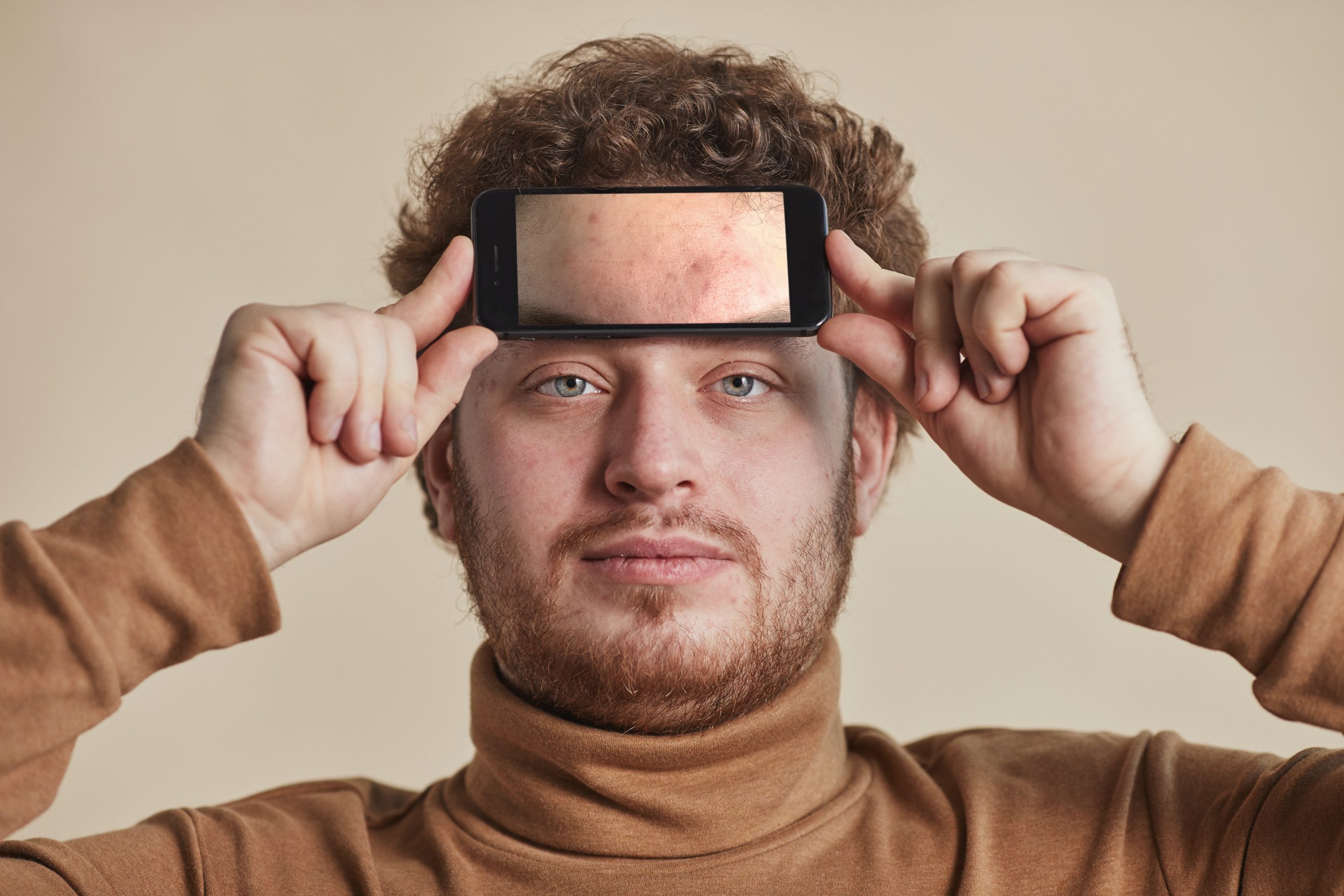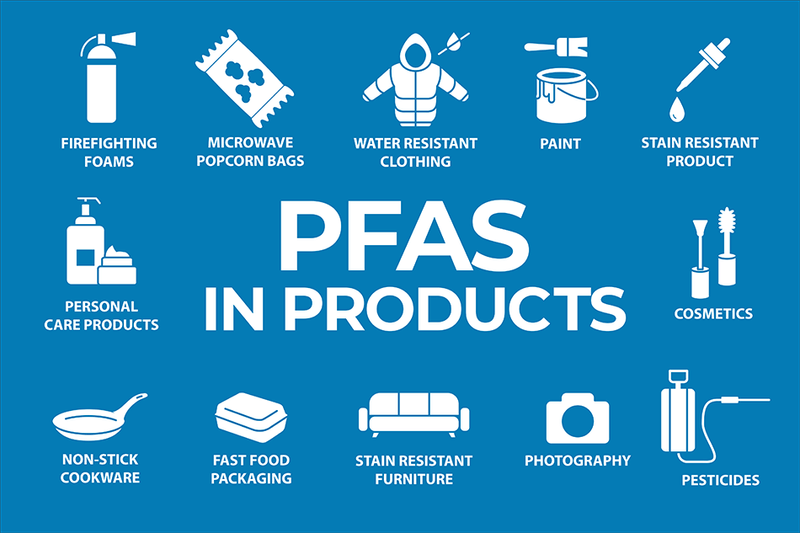Fun, fresh, and fizzy – the sparkling water is a popular summer beverage that instantly refreshes your mood and gives you a burst of chills. While you are enjoying your dose of sparkling water, do not take your eyes off the harmful chemicals contained in it. PFAS are artificial chemicals that are present in sparkling water to boost the carbonation process. The worst part about these artificial chemicals is that they do not leave your body and stay in it forever.
So, why does sparkling water contain PFAS, and what are its side effects? In this blog post, Let’s explore the notorious artificial chemical ‘PFAS’.
What is PFAS?
PFAS or ‘per- and polyfluoroalkyl substances’ are artificial chemicals that are added in the synthesis of stain-resistant fabrics, food packaging, cleaning products, non-stick cookware, and grease-resistant paper to increase stain and heat resistance and also in fluoropolymer coatings. Soon after the invention of PFAS, it became a vital part of several waterproof coating projects and aided the manufacturing process of consumer products.
The debate around PFAS chemicals was initiated when it was discovered that when consumed in sparkling water, PFAS does not leave the body or decompose. Rather it stays in the system and is linked to a number of health complications. Even small environmental exposure to these toxic elements is enough to disrupt the environment quickly by contaminating water, soil, air, and everything in the surroundings. It is quite evident now that how devastating PFAS consumption can be for the human body. According to PFAS regulation in the US, a PFAS concentration beyond 70 ppt is considered dangerous for human bodies and the environment, so it is important to consider consumption. PFAS level of less than one ppt is the only safe standard per most regulations.
Do all Sparkling Water Brands Contain PFAS?
As a curious reader, you would be inquisitive about including PFAS in sparkling water. Well, it is true that sparkling water has more percentage of PFAS as compared to regularly consumed water. However, not every sparkling water contains PFAS, as per consumer reports. Out of 47 sparkling water brands which were used to carry out the research, only two were found to lack PFAS.
Interestingly, sparkling water is not the only source of consuming PFAS. In the USA, even tap water is found to have a minor amount of PFAS, which scientists have predicted to be dangerous for human health. Once these chemicals invade our natural surroundings, it becomes easier for humans and wild lives to be affected by their toxicity. PFAS-containing water, when used to grow vegetables or in any product such as milk, rice, eggs, etc., the chemicals are absorbed in the human blood, hence causing health issues.
Common Applications of PFAS
As stated earlier, there are various applications of PFAS and not just sparkling water; it is easier to predict that regularly consumed products contain some concentration of PFAS. Some of the popular applications in both commercial and residential areas include:
- Shampoos & conditioners
- Floor cleaning products
- Tents & umbrellas
- Non-stick cookware
- Food packaging
- Cosmetic products
- Carpet
- Dental floss
Why is PFAS Dangerous for the Human Body?
PFAS are considered to be the chemicals that most carbonated beverages contain. PFAS has been used for decades due to its properties of resisting grease and stains, especially in restaurants. However, after binding with carbon-fluorine, the PFAS chemicals became impossible to break and were termed as ‘forever chemicals.’
Any concentration of chemicals inside the human body is dangerous for various organs, and in the case of unbreakable chemicals, the extent of danger increases. PFAS, a regular part of non-stick cookware, gets dissolved in the food prepared on the cooking range and contaminates your internal organs. The adverse health effects related to the consumption of sparkling water that contains PFAS are:
- Decreased testosterone level in men which is linked to causing infertility.
- Increased concentration of PFAS is linked to birth defects, newborn deaths, and low post-birth weight.
- PFAS may lead to causing liver cancer.
- In asthma patients, PFAS may cause shortness of breath.
How much Quantity of PFAS is Acceptable?
Health and public departments are not confined to an exact acceptable amount of PFAS. Since these chemicals are present in all those products we consume regularly or at least have a solid usage in our household, it is important to determine how much PFAS is not harmful and can be consumed without any risk. Moreover, sparking water bottle is more likely to contain a large concentration of PFAS, and health practitioners discourage drinking sparkling water more than a specified limit. Various sparkling water manufacturing brands ensure that their water does not contain any harmful concentration of PFAS and that their products are safe.
Regarding the allowed PFAS consumption, different states have specified different acceptable levels. For both PFOA and PFOS (two common PFAS), the combined concentration per each chemical should not be more than four ppt, according to EPA. Unfortunately, the consumption of PFAS has seeped into our regularly consumed water to the extent that it has become impossible to get rid of the toxicity of PFAS completely. However, some sparkling water manufacturing brands still provide the lowest levels of PFAS, including; Spindrift, Schweppes, San Pellegrino, and Dasani, to name a few more.
Bottom Line
Perfluorinated and polyfluorinated alkyl substances, commonly referred to as PFAS, are frequently used artificial chemicals containing over 4,700 components. They build up over time in individuals and the environment if you interact more with the products containing PFAS. They are so persistent in our environment and bodies that they are called “forever chemicals.” Due to being stubborn and unbreakable in nature, PFAS are linked to several ailments in the human body. Although sparkling water is a refreshing treat in summer, one should not avoid the danger associated with the consumption of PFAS in sparkling water.
Frequently Asked Questions (FAQs)
Which sparkling water brands contain the highest amount of PFAS?
Sparkling water manufacturing brands such as Canada Dry, Poland Spring, Polar, Perrier, La Croix, Topo Chico, and Polar Seltzer have a high concentration of PFAS in their sparkling water.
What is PFAS?
PFAS stands for ‘per- and polyfluoroalkyl substances’ and are artificial chemicals used in several products for their heat and grease resistance properties.
How does PFAS affect human health?
Consuming PFAS in higher concentrations lowers testosterone levels, infertility, disturbance in thyroid hormone, cancer, and birth defects.
Why are PFAS termed chemicals forever?
PFAS are known as forever chemicals as they do not break down in the human body or environment. Once these are consumed in high concentrations, they contaminate the environment.
What are the two most toxic types of PFAS?
PFOA and PFOS are two of the most harmful PFAS, which are extremely toxic for the human body and the environment.
Why does PFAS not break down?
PFAS comprises the strongest carbon-fluorine, which is considered unbreakable chemical bonding. This is why PFAS is not easy to degrade once it becomes a part of the environment.
Is it possible to remove PFAS from the body?
Currently, there is no medically effective method of removing PFAS from the body as these chemicals stay forever in the human body. However, the least you can do is limit your exposure to PFAS products.

John Davis is a passionate content writer with a knack for crafting engaging narratives across various subjects. With a keen eye for detail and a love for storytelling, John brings ideas to life through the power of words. His dedication to delivering high-quality and informative content has made him a trusted voice in the digital realm. When he’s not at his desk, you’ll find John exploring new hobbies and seeking inspiration in the world around him.










Loading…